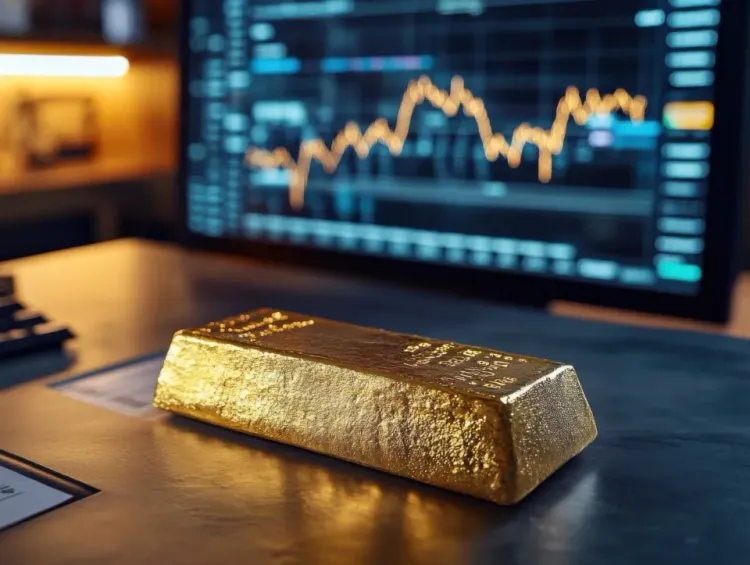Note: In traditional technical analysis, the 200-day moving average is considered a key long-term trend line. It smooths the average price of the last 200 trading days, acting as a technical support or resistance. A gold price that is clearly above this line for a sustained period signals a strong uptrend and heightened buying activity. In October, the difference between the gold price and the 200-day moving average was above 25%, however, suggesting technical overheating and an overbought state. This led to a short-term correction triggered by profit-taking.
Three macroeconomic forces that could continue to drive gold in 2026
- Further interest-rate cuts by the US Fed: Expected interest-rate cuts by the US Fed reduce the opportunity costs of gold.
- Continued weakening of the US dollar: A weaker dollar renders gold attractive to investors from other currency areas, supporting demand.
- Geopolitical and macroeconomic uncertainties: Geopolitical tensions, trade conflicts, and concerns over high government debt act as risk warnings, pushing investors into gold as a safe haven.
Three macroeconomic forces that speak against a continued gold rally
- Stronger-than-expected economic recovery and, as a result, higher interest rates: Should the US Fed become more restrictive and keep interest rates high or even increase them, the opportunity costs of holding gold would rise, putting pressure on prices.
- Stronger US dollar: A stronger US dollar weighs on the gold price, as gold is traded in US dollars and therefore becomes more expensive for investors from other currency areas. This reduces demand.
- Easing geopolitical and economic uncertainties: If global trade conflicts and geopolitical tensions ease and equity markets remain stable, safe-haven buying weakens, reducing demand for gold.
Our assessment: Gold remains a strategic anchor in a fragile market environment
From our point of view, several factors suggest that gold will retain its strategic role in a portfolio context next year. The weakening global economy, declining interest rates, and ongoing geopolitical tensions are pushing investors into stable stores of value again.
Our assessment is backed by data from the World Gold Council: Ongoing buying pressure from central banks remains a key driver of the market. Almost all central banks surveyed by the World Gold Council expect gold reserves to increase, and a significant number plans to buy more gold – particularly in emerging markets increasingly seeking to diversify away from the US dollar.
This reinforces a structural trend: gold is increasingly seen not as a short-term crisis trade, but as a strategic counterbalance to government bonds and currencies.
However, investors should keep in mind that gold can also suffer significant setbacks during periods of market stress – for example when investors take profits or need to cover liquidity needs, as happened in October.
Technical analysis identifies the area around USD 4,000 as an important psychological support, which could be crucial for further price development. Short-term setbacks do little to change the overall positive outlook.
